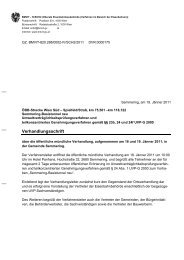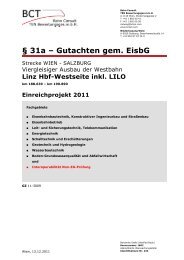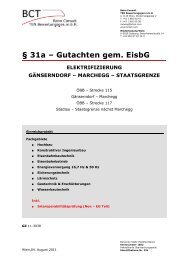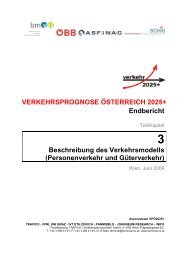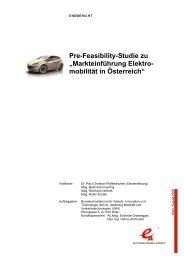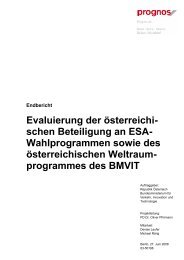Schriftenreihe .;technologiekompetenz Verkehr in
Schriftenreihe .;technologiekompetenz Verkehr in
Schriftenreihe .;technologiekompetenz Verkehr in
Create successful ePaper yourself
Turn your PDF publications into a flip-book with our unique Google optimized e-Paper software.
VEHICLE ENGINEERING FOR HYBRID AND ELECTRIC<br />
VEHICLE POWERTRAIN SYSTEMS<br />
Not only the vehicle’s powertra<strong>in</strong> will undergo significant<br />
changes but also the vehicle itself will be reeng<strong>in</strong>eered<br />
address<strong>in</strong>g the new requirements of an <strong>in</strong>creas<strong>in</strong>gly bigger<br />
electrical storage system and new auxiliaries.<br />
Convert<strong>in</strong>g exist<strong>in</strong>g vehicle platforms is a feasible way for „addon”<br />
hybridisation but is not smart when design<strong>in</strong>g new plug-<strong>in</strong><br />
hybrid electric (PHEVs) or new electric vehicle (EV) concepts.<br />
New design concepts are required to fulfil all demands for<br />
functionality, safety (crash), cool<strong>in</strong>g systems and high voltage<br />
auxiliary systems.<br />
A difficult po<strong>in</strong>t <strong>in</strong> the process of convert<strong>in</strong>g a conventional<br />
vehicle <strong>in</strong>to a hybrid vehicle is to <strong>in</strong>tegrate a reasonable big<br />
battery pack and ma<strong>in</strong>ta<strong>in</strong> <strong>in</strong>ner space as well as the centre of<br />
gravity required for good driveability. The crash behaviour has to<br />
be considered <strong>in</strong> an early stage, simulation and test<strong>in</strong>g has to<br />
ensure the position and packag<strong>in</strong>g. Further auxiliary systems<br />
such as electric steer<strong>in</strong>g, electric brak<strong>in</strong>g aid and the new<br />
cool<strong>in</strong>g systems for electric motors, <strong>in</strong>verters and especially the<br />
battery need to be implemented. Today many of those systems<br />
are not available <strong>in</strong> the high voltage range and have to be taken<br />
off the low efficient 12V shelf. Usually, vehicle-specific solutions<br />
are the outcome, which are an additional obstacle for the<br />
desired standardisation of products such as battery packs.<br />
INTERNAL COMBUSTION ENGINES AND TRANSMISSIONS<br />
FOR HYBRID POWERTRAIN SYSTEMS<br />
New vehicle platforms need to be designed to provide purpose<br />
built solutions for PHEVs and EVs. This case can ease the target<br />
conflicts a bit, as the vehicle can be literally „built around the<br />
battery pack”. Design studies have shown that the optimal<br />
position of the battery is a „T”, us<strong>in</strong>g the tunnel and the place<br />
under the rear seats. This location gives best load distribution<br />
and security <strong>in</strong> case of a crash.<br />
Furthermore, the high weight of the battery pack <strong>in</strong> an electric<br />
vehicle needs to be compensated by new space frame concepts<br />
and the use of lightweight materials.<br />
37





